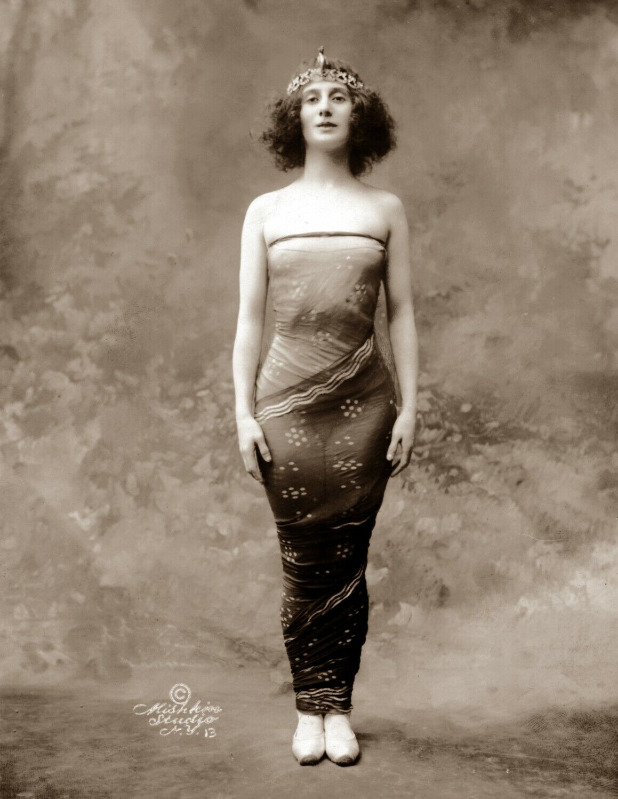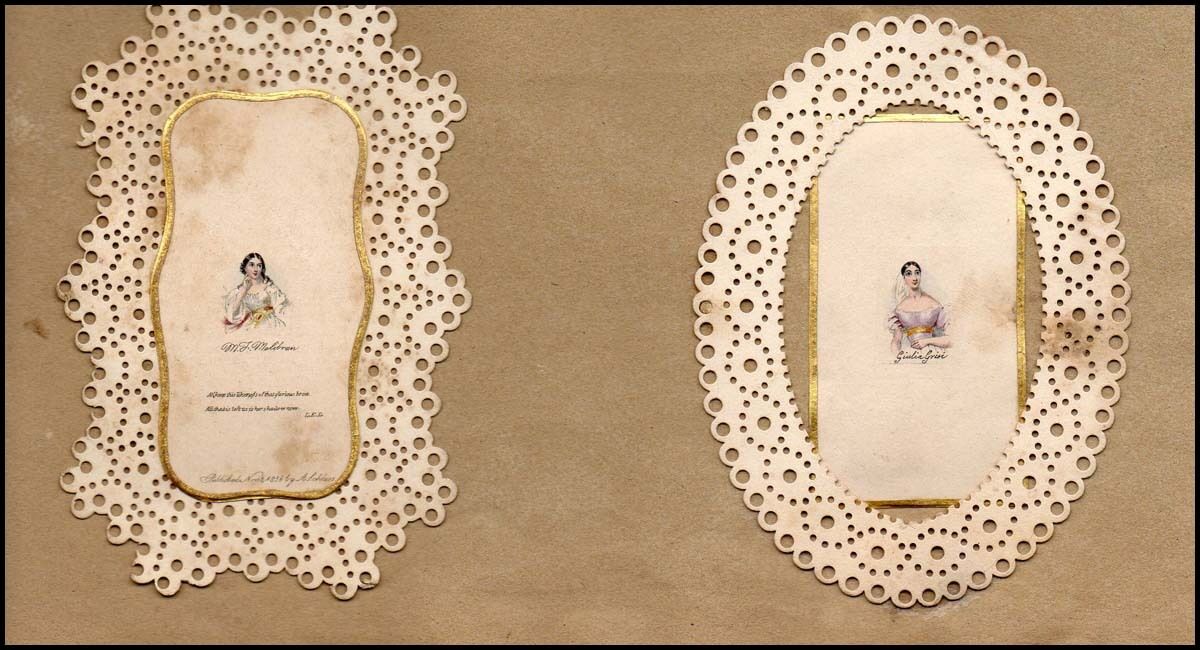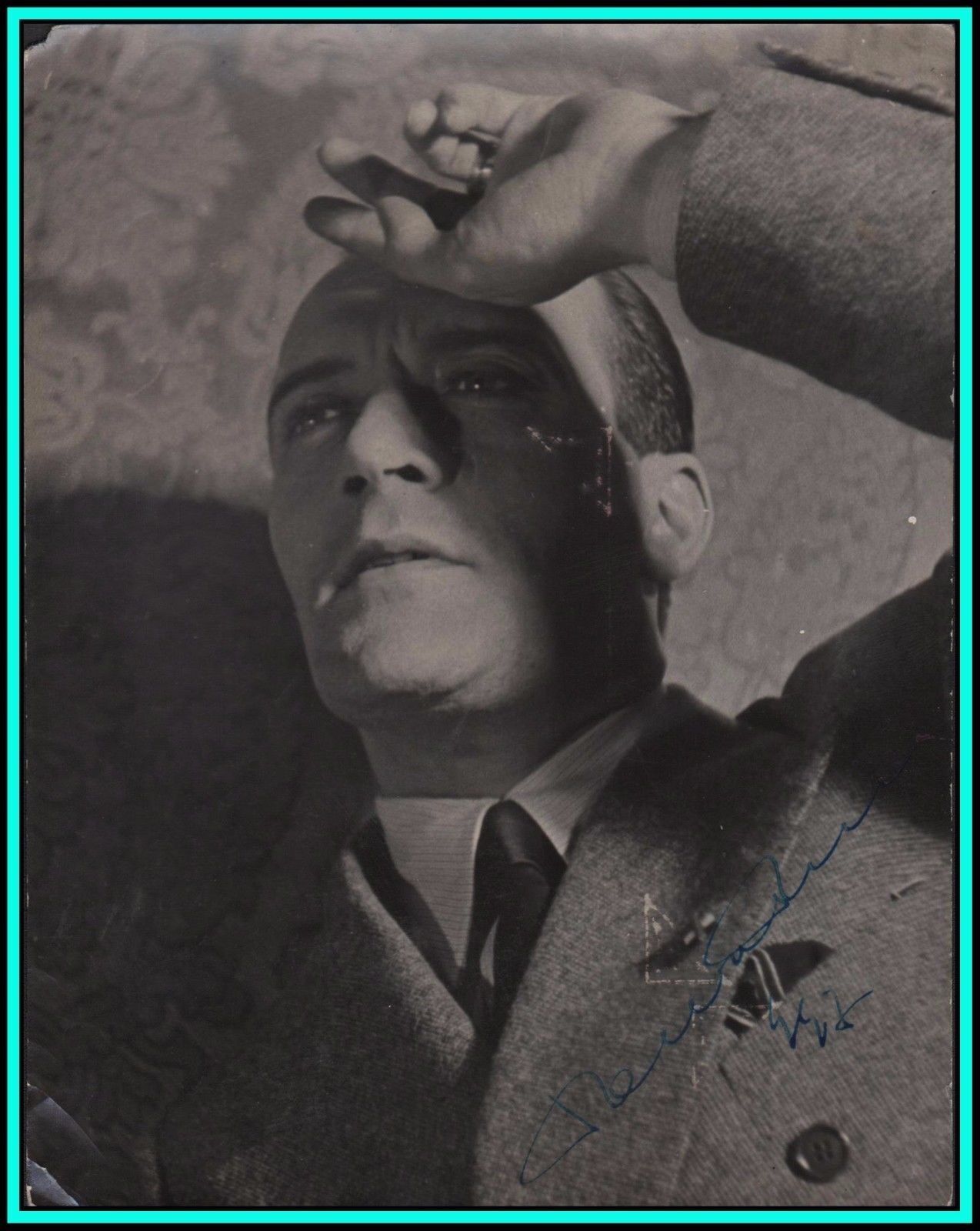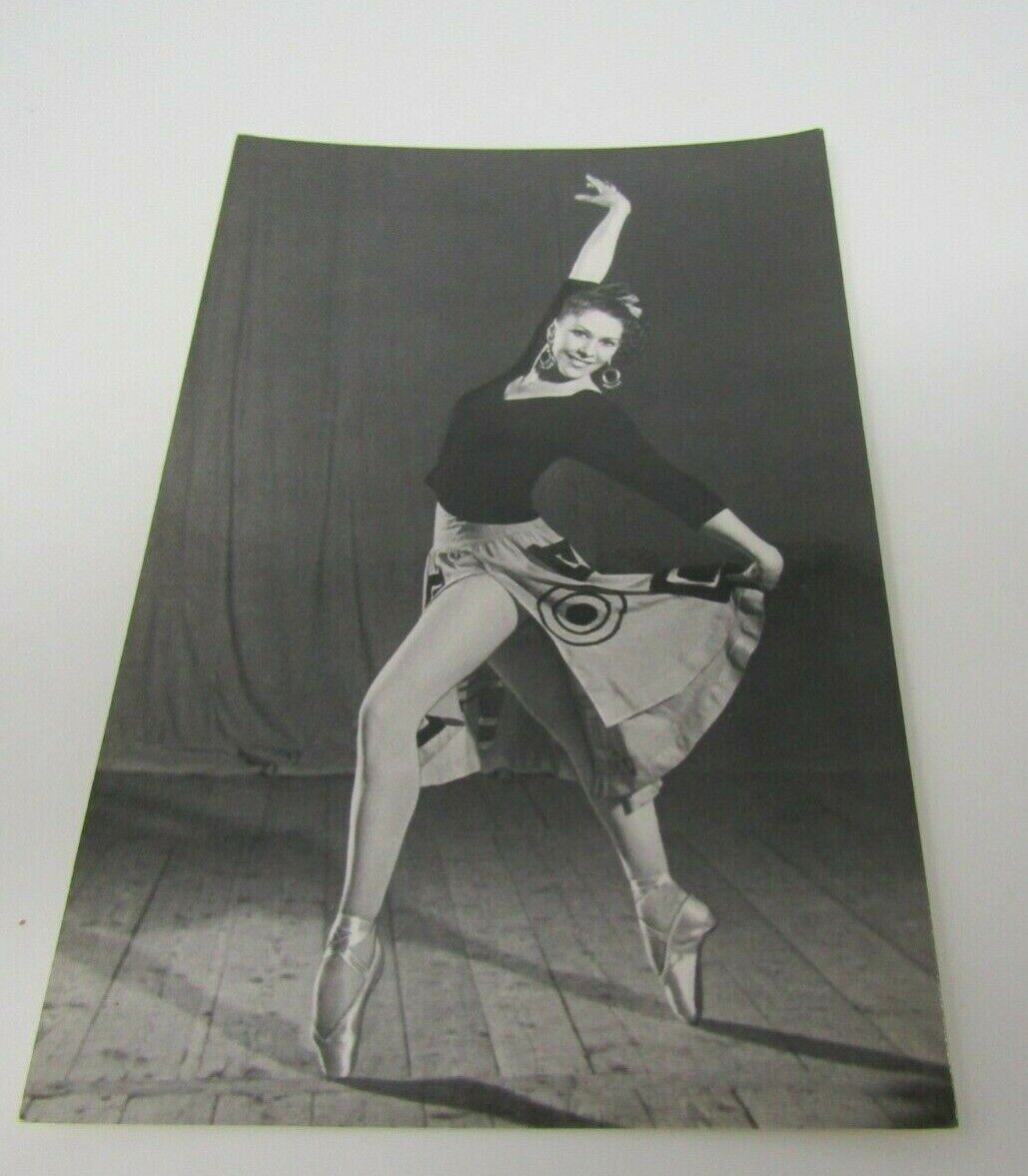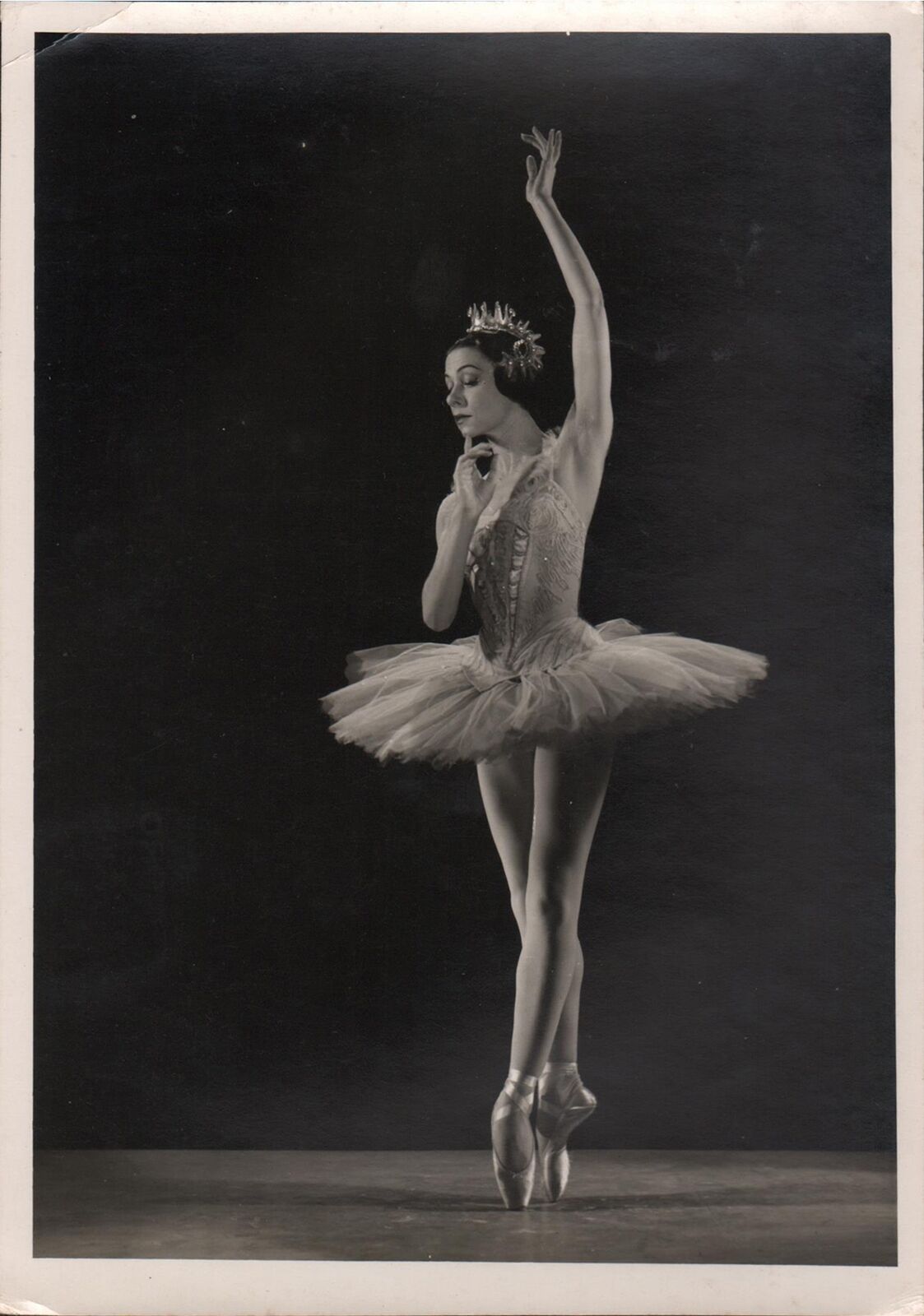-40%
Joseph Joachim photo violin violinist
$ 52.79
- Description
- Size Guide
Description
Hello!For sale I have a period postcard photo of violinist Joseph Joachim. Printed in England and unused. Fine condition. 3.5 x 5.5 inches. USPS Priority Mail insured.
I have been a professional violinist for 20 years. I currently teach violin at University of California, Berkeley, and play Concertmaster for the Sacramento Philharmonic and Opera. I've been buying and selling music memorabilia on eBay since it was invented and I've been buying antique art from European and American auction houses for a decade. All pieces for sale are guaranteed authentic and come from my personal collection, which numbers in the thousands. To learn more about me visit www.danflanaganviolin.com.
Joseph Joachim
(
Hungarian
:
Joachim József
, 28 June 1831 – 15 August 1907) was a Hungarian violinist, conductor, composer and teacher who made an international career, based in
Hanover
and Berlin. A close collaborator of
Johannes Brahms
, he is widely regarded as one of the most significant violinists of the 19th century. Joachim studied violin early, beginning in Buda at age five, then in Vienna and
Leipzig
. He made his debut in London in 1844, playing Beethoven's
Violin Concerto
, with
Mendelssohn
conducting. He returned to London many times throughout life. After years of teaching at the Leipzig Conservatory and playing as principal violinist of the
Gewandhausorchester
, he moved to
Weimar
in 1848, where
Franz Liszt
established cultural life. From 1852, Joachim served at the court of Hanover, playing principal violin in the opera and conducting concerts, with months of free time in summer for concert tours. In 1853, he was invited by
Robert Schumann
to the Lower Rhine Music Festival, where he met
Clara Schumann
and Brahms, with whom he performed for years to come. In 1879, he premiered Brahms'
violin concerto
with Brahms as conductor.
[1]
He married
Amalie
, an opera singer, in 1863, who gave up her career; the couple had six children. Joachim quit service in Hanover in 1865, and the family moved to Berlin, where he was entrusted with founding and directing a new department at the Royal Conservatory, for performing music. He formed a string quartet, and kept performing chamber music on tours. His playing was recorded in 1903. Joachim was born in Köpcsény,
Moson County
,
Kingdom of Hungary
(present-day
Kittsee
in
Burgenland
, Austria). He was the seventh of eight children born to Julius, a wool merchant, and Fanny Joachim, who were of
Hungarian-Jewish
origin.
[2]
He spent his childhood as a member of the Kittsee
Kehilla
(Jewish community), one of Hungary's prominent
Siebengemeinden
('Seven Communities') under the protectorate of the
Esterházy
family. He was a first cousin of Fanny Wittgenstein, née Figdor, the mother of
Karl Wittgenstein
and the grandmother of the philosopher
Ludwig Wittgenstein
and the pianist
Paul Wittgenstein
.
[3]
In 1833 his family moved to
Pest
, which in 1873 was united with Buda and Óbuda to form
Budapest
. There from 1836 (age 5) he studied violin with the Polish violinist Stanisław Serwaczyński, the
concertmaster
of the opera in Pest, said to be the best violinist in Pest.
[2]
Although Joachim's parents were "not particularly well off", they had been well advised to choose not just an "ordinary" violin teacher.
[4]
Joachim's first public performance was 17 March 1839 when he was of age 7.
[5]
(Serwaczyński later moved back to Lublin, Poland, where he taught
Wieniawski
.) In 1839, Joachim continued his studies at the
Vienna Conservatory
(briefly with Miska Hauser and
Georg Hellmesberger, Sr.
;
[6]
finally – and most significantly – with
Joseph Böhm
,
[7]
who introduced him to the world of chamber music).
[8]
[9]
In 1843 he was taken by his cousin, Fanny Figdor, who later married "a Leipzig merchant"
[10]
named Wittgenstein, to live and study in
Leipzig
.
[11]
In the journal
Neue Zeitschrift fůr Musik
Robert Schumann
was highly enthusiastic about
Felix Mendelssohn
, on which Moser writes "Only in Haydn's admiration for Mozart does the history of music know a parallel case of such ungrudging veneration of one great artist for his equal."
[12]
in 1835, Mendelssohn had become director of the
Leipzig Gewandhaus
orchestra. In 1843 Joachim became a protégé of Mendelssohn, who arranged for him to study theory and composition with Moritz Hauptmann and violin with Ferdinand David.
[13]
In his début performance in the Gewandhaus Joachim played the
Otello Fantasy
by
Heinrich Wilhelm Ernst
. On 27 May 1844 Joachim, not quite 13, in his London debut with
Mendelssohn
conducting at a concert of the
Philharmonic Society
, played the solo part in Beethoven's
Violin Concerto
. This was a triumph in several respects, as described by R. W. Eshbach.
[14]
The Philharmonic had a policy against performers so young, but an exception was made after auditions persuaded gatherings of distinguished musicians and music lovers that Joachim had mature capabilities. Despite Beethoven's recognition as one of the greatest composers, and the ranking nowadays of his violin concerto as among the greatest few, it was far from being so ranked before Joachim's performance.
Ludwig Spohr
had harshly criticized it, and after the London premiere by violinist Edward Eliason, a critic had said it "might have been written by any third or fourth rate composer." But Joachim was very well prepared to play Beethoven's concerto, having written his own cadenzas for it and memorized the piece. The audience anticipated great things, having got word from the rehearsal,
[15]
and so, Mendelssohn wrote, "frenetic applause began" as soon as Joachim stepped in front of the orchestra. The beginning was applauded still more, and "cheers of the audience accompanied every ... part of the concerto." Reviewers also had high praise. One for 'The Musical World' wrote "The greatest violinists hold this concerto in awe ... Young Joachim ... attacked it with the vigour and determination of the most accomplished artist ... no master could have read it better," and the two cadenzas, written by Joachim, were "tremendous feats ... ingeniously composed". Another reviewer, for the 'Illustrated London News', wrote that Joachim "is perhaps the first violin player, not only of his age, but of his siècle" [century]. "He performed Beethoven's solitary concerto, which we have heard all the great performers of the last twenty years attempt, and invariably fail in ... its performance was an eloquent vindication of the master-spirit who imagined it." A third reviewer, for the 'Morning Post', wrote that the concerto "has been generally regarded by violin-players as not a proper and effective development of the powers of their instrument" but that Joachim's performance "is beyond all praise, and defies all description" and "was altogether unprecedented." Joachim remained a favorite with the English public for the rest of his career. He visited England in each year 1858, 1859, 1862 largely at the behest of his friend
William Sterndale Bennett
, and for several decades thereafter.
[16]
Moser (p. 28 ff.) writes "After the appearance of the six String Quartets (Op. 18) Beethoven had complete command of the field of chamber-music", although in the later quartets he "makes many exacting demands" of string players. Moser (p. 29) further writes that "at the time of Beethoven's death", such people as Spohr and
Hauptmann
did not necessarily esteem the late quartets above the earliest ones. Moser, p. 30 writes that in Vienna "the public showed a marked hostility toward" the late quartets. But Joachim's teacher Böhm had an appreciation of the late quartets, which he communicated to Joachim.
[17]
At the age of 18, "in the whole of Germany" Joachim had no equal, either in the rendering of Bach or in the concertos of Beethoven and Mendelssohn; while as quartet player, "he had no cause to fear rivalry."
[18]
Following Mendelssohn's death in 1847, Joachim stayed briefly in Leipzig, teaching at the Conservatorium and playing on the first desk of the
Gewandhaus Orchestra
with
Ferdinand David
,
[19]
whom Mendelssohn had appointed as
concertmaster
on taking up the conductorship in 1835. In 1848, the pianist and composer
Franz Liszt
took up residence in
Weimar
, where
Goethe
and
Schiller
had lived.
[20]
Liszt was determined to re-establish the town's reputation as the
Athens
of Germany. There, he gathered a circle of young avant-garde disciples, vocally opposed to the conservatism of the Leipzig circle. Joachim was amongst the first of these. He served Liszt as concertmaster, and for several years enthusiastically embraced the new "psychological music," as he called it. In 1852 he moved to
Hanover
, at the same time dissociating himself from the musical ideals of the 'New German School' (Liszt,
Richard Wagner
,
Hector Berlioz
, and their followers, as defined by journalist Franz Brendel). "The worship of Wagner's music permeating musical taste in Weimar was to Joachim inordinate and unacceptable."
[21]
Joachim's break with Liszt became final in August 1857, when he wrote to his former mentor: "I am completely out of sympathy with your music; it contradicts everything which from early youth I have taken as mental nourishment from the spirit of our great masters."
[22]
Hanover "was then an independent kingdom, later to be absorbed in the German empire."
[23]
King Georg of Hanover was totally blind and very fond of music; he paid Joachim a good salary and gave him considerable freedom.
[24]
Joachim's duties in Hanover included playing the main violin part in opera performances and that or conducting state concerts.
[25]
He had five summer months off, in which he made concert tours around Europe.
[26]
In March 1853 he sent to Liszt a copy of the Overture to Hamlet he had recently composed.
[27]
Also in 1853, a committee headed by Schumann invited Joachim to the Lower Rhine Music Festival.
[28]
At the Festival, Joachim again soloed in the Beethoven violin concerto.
[29]
His success made him, it is said, "the most renowned artist of Germany".
[28]
Robert Schumann
and his wife
Clara
were deeply impressed, and formed a "close connection" with Joachim.
[30]
Joachim met the then publicly unknown 20-year-old
Brahms
, and wrote of him that his playing "shows the intense fire...which predicts the artist" and "his compositions already betoken such power as I have seen in no other musician of his age".
[31]
Joachim strongly recommended Brahms to Robert.
[32]
Brahms was received by the Schumanns with great enthusiasm. After Robert's mental breakdown in 1854 and death in 1856, Joachim, Clara, and Brahms remained lifelong friends and shared musical views. Joachim's performing style with the violin, like Clara's at the piano, is said to have been "restrained, pure, antivirtuosic, expressing the music rather than the performer."
[33]
In December 1854, Joachim visited Robert at the Endenich asylum where he had been since February, Joachim being his first visitor.
[34]
Early on, Brahms already played and composed for the piano, which "he had mastered in a supreme fashion", but he felt deficient in orchestration.
[35]
In 1854 he began composing what was to become his
first piano concerto
, his first orchestral piece. He sent a score of the first movement to Joachim, requesting his advice.
[36]
After getting Joachim's response, Brahms wrote to him "A thousand thanks for having studied the first movement in such a sympathetic and careful manner. I have learned a great deal from your remarks. As a musician I really have no greater wish than to have more talent so that I can learn still more from such a friend."
[37]
Later in the composition of the concerto, which took four years, Brahms wrote to Joachim "I am sending you the rondo once more. And just like the last time, I beg for some really severe criticism."
[38]
The final manuscript of the concerto "shows many alterations in the handwriting of Joachim".
[39]
Joachim's time in Hanover was his most prolific period of composition. Then and during the rest of his career, he frequently performed with Clara Schumann. For example, in October–November 1857 they took a recital tour together to Dresden, Leipzig, and Munich.
[40]
St. James's Hall
, London, which opened in 1858, hosted a series of "Popular Concerts" of chamber music, of which programmes from 1867 through 1904 are preserved.
[41]
Joachim appears a great many times. He visited London each year from 1866 on.
[42]
In March 1898 and in 1901–1904 Joachim appeared in his own quartet of players, but otherwise far more often he appeared with resident Popular Concerts artists Louis Ries,
[43]
second violin, J. B. Zerbini,
[44]
first viola, and
Alfredo Piatti
, first cello, reputed to be "one of the most celebrated cellists" of the time.
George Bernard Shaw
wrote that the Popular Concerts had helped greatly to spread and enlighten musical taste in England.
[45]
Joachim had been a mainstay of the chamber music Popular Concerts. At 18 of the Popular Concerts at least, Clara Schumann performed along with Joachim, Zerbini and Piatti, presumably playing piano quartets (without second violin), or sometimes piano trios (for piano, violin, and cello). (The programs of those concerts very likely also included string quartets in which she of course did not play, as Ries is also listed.) A favorite piece of Clara's was Brahms's
Piano Quartet in A major
. She wrote to Brahms 27 February 1882 from London that the piece had received "much applause".
[46]
About a performance of it in Liverpool 11 February she had written in her diary that it was "warmly received, much to my surprise as the public here is far less receptive than that in London."
[47]
In January 1867 there had been a tour to
Edinburgh
and
Glasgow
,
Scotland
, by Joachim, Clara, her oldest daughter Marie, Ries, Zerbini, Piatti, two English sisters "Miss Pyne," one a singer, and a Mr. Saunders who managed all the arrangements. Marie Schumann wrote home from Manchester that in Edinburgh Clara "was received with tempestuous applause and had to give an encore, so had Joachim. Piatti, too, is always tremendously liked."
[48]
Joachim had extensive correspondence with both Clara and Brahms, as Brahms greatly valued Joachim's opinion of his new compositions. In 1860 Brahms and Joachim jointly wrote a manifesto against the "progressive" music of the 'New German' School, in reaction to the polemics of Brendel's
Neue Zeitschrift für Musik
. This manifesto, a volley in the
War of the Romantics
, had originally few (four
[13]
) signers (more later) and met with a mixed reception, being heavily derided by followers of Wagner. On 10 May 1863 Joachim married the contralto
Amalie Schneeweiss
(stage name: Amalie Weiss) (1839–99). Amalie gave up her own promising career as an opera singer and gave birth to six children. She continued to perform in
oratorios
and to give
lieder
recitals
. In 1865 Joachim quit the service of the King of Hanover in protest, when the Intendant (artistic director) of the Opera refused to advance one of the orchestral players (Jakob Grün) because of the latter's Jewish birth.
[50]
In 1866, as a result of the
Austro-Prussian war
, in which
Prussia
and its capital
Berlin
became the dominant German state and city, Joachim moved to Berlin, where he was invited to help found, and to become the first director of, a new department of the Royal Academy of Music, concerned with musical performance and called the Hochschule für ausübende Tonkunst. On Good Friday, 10 April 1868, Joachim and his wife joined their friend, Johannes Brahms, in the celebration of one of Brahms' greatest triumphs, the first complete performance of his
German Requiem
at the
Bremen Cathedral
. Amalie Joachim sang "I Know that My Redeemer Liveth" and Joseph Joachim played Robert Schumann's
Abendlied
. It was a glorious occasion, after which about 100 of the composer's friends, the Joachims, Clara Schumann,
Albert Dietrich
and his wife,
Max Bruch
and others gathered at the Bremen Rathskeller. In 1869, the Joachim
String Quartet
was formed, which quickly gained a reputation as Europe's finest. It continued to perform until Joachim's death in 1907. Other members of the Quartet were,
Karel Halíř
(2nd violin) from 1897 on;
Emanuel Wirth
(viola) from 1877 on; and
Robert Hausmann
(cello), from 1879 on.
[51]
In 1878 while writing his
violin concerto
, Brahms consulted Joachim, who "freely gave him encouragement and technical advice".
[52]
Brahms asked Joachim to write the
cadenza
for the concerto, as he did. In 1884, Joachim and his wife separated after he became convinced that she was having an affair with the publisher
Fritz Simrock
. Brahms, certain that Joachim's suspicions were groundless, wrote a sympathetic letter to Amalie, which she later produced as evidence in Joachim's divorce proceeding against her.
[53]
This led to a cooling of Brahms' and Joachim's friendship, which was not restored until some years later, when Brahms composed the
Double Concerto in A minor
for violin and cello, Op. 102, 1887, as a peace offering to his old friend. It was co-dedicated to the first performers, Joachim and Robert Hausmann. In late 1895 both Brahms and Joachim were present at the opening of the new
Tonhalle
at Zürich, Switzerland; Brahms conducted and Joachim was assistant conductor. But in April, two years later, Joachim was to lose forever this revered friend, as Johannes Brahms died at the age of 64 at Vienna. At Meiningen, in December 1899, it was Joachim who made the speech when a statue to Brahms was unveiled. In March 1877, Joachim received an honorary Doctorate of Music from Cambridge University. For the occasion he presented his Overture in honor of Kleist, Op. 13.
[54]
Near the 50th anniversary of Joachim's debut recital, he was honored by "friends and admirers in England"
[55]
on 16 April 1889 who presented him with "an exceptionally fine" violin made in 1715 by Antonio Stradivari, called "Il Cremonese".
[56]
About ten years later, for the sixtieth jubilee, a concert in honor of Joachim was given by his former students of violin and viola playing and cellists who had studied quartet playing with him, on 22 April 1899.
[57]
The total of some 140 string players was impressive, as were their instruments (made by Stradivari, Guarneri, Bergonzi, Amati, etc.).
[58]
An honor such as that concert "had been accorded to no other musician during his lifetime".
[57]
During 1899, Joachim was invited to become president of the newly established
Oxford & Cambridge Musical Club
in London. He remained club president until his death.
[59]
In Berlin, on 17 August 1903, Joachim recorded five sides for The Gramophone & Typewriter Ltd (G&T), which remain a fascinating and valuable source of information about 19th-century styles of violin playing. He is the earliest violinist of distinction known to have recorded,
[
citation needed
]
only to be followed soon thereafter when
Sarasate
made some recordings the following year. Joachim's portrait was twice painted by
Philip de László
. A portrait of Joachim was painted by
John Singer Sargent
[60]
and presented to him at the 1904 "Diamond Jubilee" celebration of his sixtieth anniversary of his first appearance in London. Joachim remained in Berlin until his death in 1907. At his 75th birthday observance in June 1906, Joachim saidThe Germans have four violin concertos. The greatest, most uncompromising is Beethoven's. The one by Brahms vies with it in seriousness. The richest, the most seductive, was written by Max Bruch. But the most inward, the heart's jewel, is
Mendelssohn's
.
[61]
Bruch
wrote three violin concertos. Joachim was presumably referring to his
Concerto No. 1
, which is the most well-known and frequently performed. Joachim had assisted Bruch in revising that concerto.



